life of a turtle. vida de una tortuga.
Hello good morning, afternoon or evening I am Hernan Vazquez career professional firefighter. Active work in firefighters of san francisco Venezuela Zulia state I am also a graduate in Environmental Management and analyst in the same subject.
Today I bring you curiosities.
Did you know that a turtle can last more than 100 years?
Well, I'll tell you a little about them.
Turtles are one of those reptiles that eat a wide variety of foods, although their diet changes a lot between different species, since each one has its own habits. Also, it is important to take into account where you bought this pet, since many species are in danger of extinction and you have to know what to feed them. Also known as chelonians, box turtles are the species that you will normally find in pet stores. Their care is quite simple, but what do they feed on?
Hola buenos días, tardes o noche soy Hernan Vazquez bombero profesional de carrera. Activo trabajo en bomberos de san francisco Venezuela estado Zulia también soy licenciado en Gestión Ambiental y analista en la misma materia.
Hoy les traigo curiosidades.
¿Sabías que una tortuga puede durar más de 100 años?
Bueno te hablare un poco de ellas.
Las tortugas son unos de esos reptiles que comen una gran variedad de alimentos, aunque su dieta cambia bastante entre las distintas especies, ya que cada una tiene sus propios hábitos. Además, conviene tener en cuenta dónde has comprado esta mascota, ya que muchas especies se encuentran en peligro de extinción y tienes que saber qué darle de comer. También conocidas como quelonios, las tortugas de caja son la especie que normalmente te encontrarás en las tiendas de animales. Su cuidado es bastante sencillo, pero, ¿de qué se alimentan?
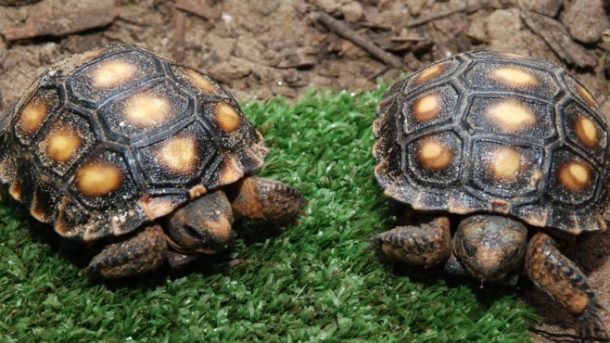
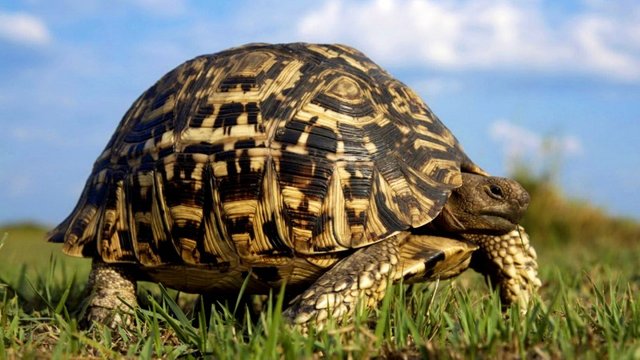
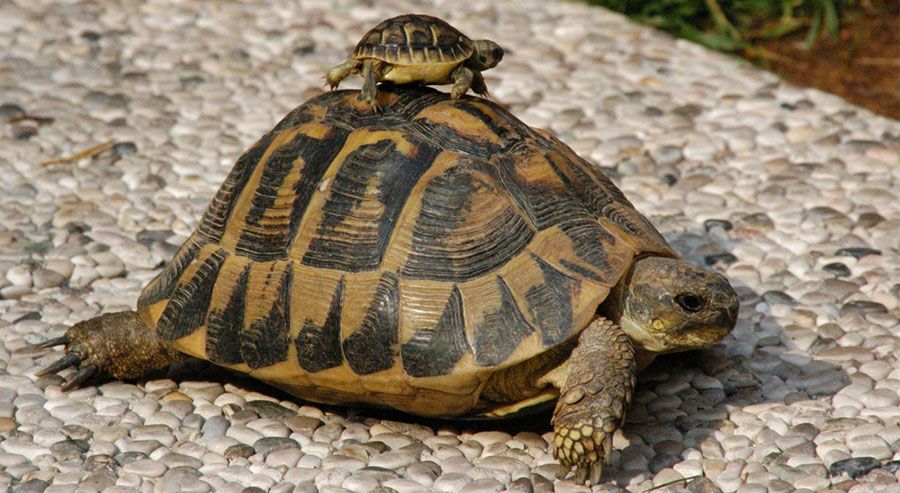
What do terrapins eat?
The first feature to highlight the terrestrial chelonians is that they are very slow animals, but they love to walk, so they need ample space to travel. This is very important, you can not leave a terrestrial turtle in a very small space because it will not be happy, if it is domestic let it come out from time to time and walk around the house. Although the ideal is that they live in a terrarium that protects them from the atmospheric conditions, and it is also necessary that it contains drinking troughs, bathtubs and a source of artificial lighting, since they are incapable of producing heat by themselves. Now I am going to put a list with the most known types of tortoises:
Mediterranean tortoise.
Delay time.
Box T.
Leopard T.
Russian T.
The feeding of the land turtles has to be very varied, but always bearing in mind that they are herbivorous animals, so that you have a reference; they must have a proportion in which 15% of what they eat is fruit and 85% the rest of vegetables.
You should also know that both phosphorus and calcium are essential in the diet of a turtle so that it stays healthy, since its shell is composed mostly of these two elements, and are necessary to keep it strong and healthy.
¿Qué comen las tortugas terrestres?
El primer rasgo a destacar de los quelonios terrestres es que son animales muy lentos, pero les encanta caminar, por lo que necesitan un amplio espacio para recorrer. Esto es muy importante, no puedes dejar a una tortuga terrestre en un espacio muy reducido ya que no será feliz, si es doméstica déjala que salga de vez en cuando y se pasee por la casa. Aunque lo ideal es que vivan en un terrario que las proteja de las condiciones atmosféricas, y es necesario también que contenga bebederos, bañeras y una fuente de iluminación artificial, ya que son incapaces de producir calor por ellas mismas. Ahora os voy a poner una lista con los tipos de tortugas terrestres más conocidas:
Tortuga mediterránea.
T. de mora.
T. de caja.
T. leopardo.
T. rusa.
La alimentación de las tortugas de tierra tiene que ser muy variada, pero siempre teniendo en cuenta que son animales herbívoros, para que tengas una referencia; ellas deben tener una proporción en la que un 15% de lo que coman sea frutas y un 85% el resto de vegetales.
También debes saber que tanto el fósforo como el calcio son imprescindibles en la dieta de una tortuga para que ésta se mantenga sana, ya que su caparazón está compuesto en su mayoría por estos dos elementos, y son necesarios para que se mantenga fuerte y sano.
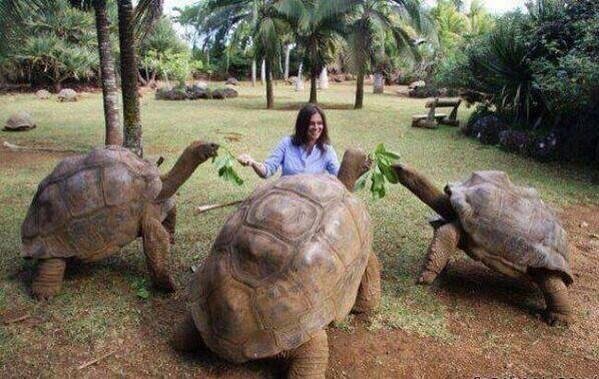
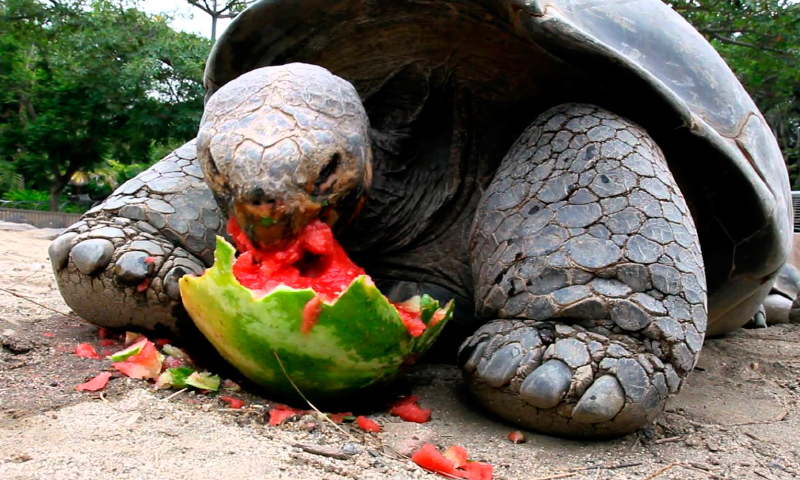
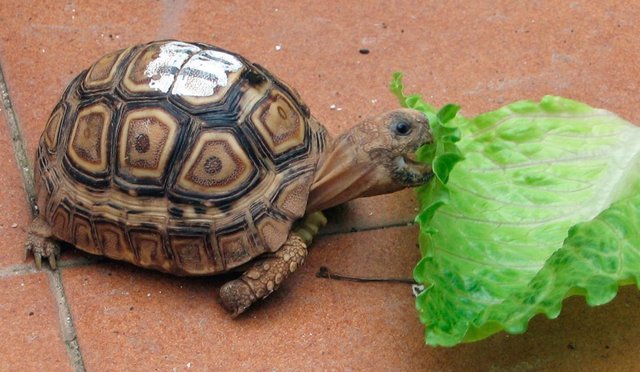
The land turtles have a very slow metabolism, so the ideal thing is that you distribute the food that they will take during the day in small portions. You should also know that the water they drink and the food they eat should be at room temperature. But the most important thing for your health is that the vegetables you serve are free of the famous pesticides or herbicides, as they are very vulnerable to them and could make you sick. Once known what tortoises eat, now I will tell you what is the diet of the marine.
Las tortugas de tierra tienen un metabolismo bastante lento, por lo que lo ideal es que repartas la comida que vayan a tomar durante el día en pequeñas raciones. También debes saber que el agua que beban y la comida que ingieran debe de estar a una temperatura ambiente. Pero lo más importante para su salud es que los vegetales que le sirvas estén libres de los famosos pesticidas o herbicidas, ya que son muy vulnerables a ellos y podrían enfermar. Una vez conocido qué comen las tortugas terrestres, ahora os voy a contar cuál es la dieta de las marinas.
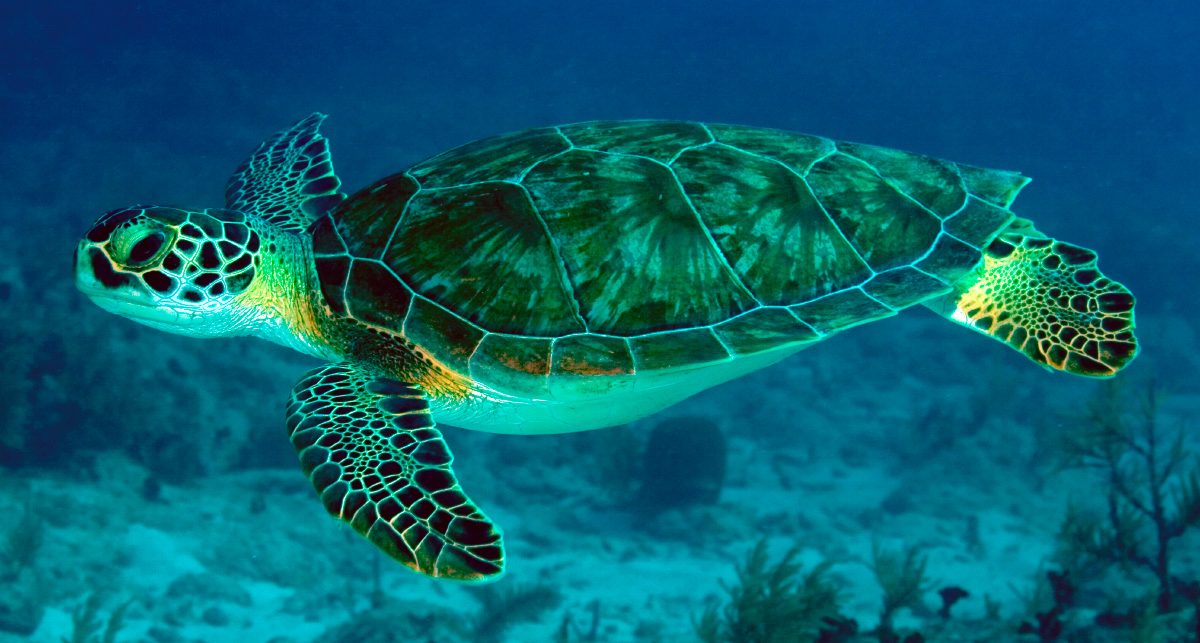

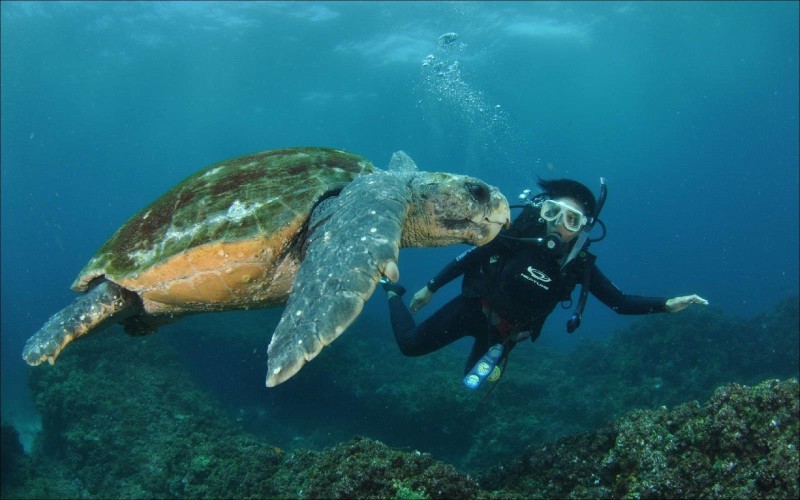
What do sea turtles feed on?
Unlike terrestrial, this type of turtles move at high speed, reaching up to 35 kilometers per hour. Another thing that differs from them is that they can not hide their heads inside their carapace, as if they can do land.
The fins of this type of reptile are completely adapted to the marine environment, so that outside of it they will move clumsily and slowly.
The human being is the greatest danger to sea turtles, as they are highly prized for their meat, skin and eggs. The red-eared ones, also called Japanese, and the babies are the most dangerous to die.
The habitat of these chelonians is the sea, but there are several exceptions such as river turtles and freshwater turtles, these being carnivorous except for saltwater.
The testudines of the sea are omnivorous animals; that is, they tend to feed on both fish and marine plants. A food that you can never miss is the coral, because they need it because of the calcium it has, to keep its shell strong as I explained above. Although they are omnivorous, it is not uncommon to see them eat octopus or small jellyfish from time to time.
As a summary we could say that sea turtles eat more than terrestrial ones, since they consume more energy when having to move more.
Known what the turtles eat, let's see where to buy the food that we should give them.
Where to buy food for turtles?
If you have come this far you will be thinking that the article is very well and everything, but to see where I find food for the turtles. Very easy; in pet shops you will find everything you need for your pet, specifically your case to the seller, since it is not the same for example having a small to a large one.
We must also bear in mind that turtles are very gourmets, so try not to change the brand of food. The fruits that you can give them you could buy them in your trusty greengrocer, and remember what I said before washing well always what you are going to give them, since they are especially delicate animals.
Where do the turtles live?
To answer this question we must look at the type of turtle what it is. The Mediterranean is very common in Spain, but we can also find it in other European countries such as France, Italy, Croatia, Bulgaria or Romania. It usually lives at about 400 meters of altitude with respect to the level of the sea.
Sea turtles, although strange, are not only adapted to live in the sea; they can also do it on earth. We can find them in tropical or subtropical seas, that is, in the hottest places. It is difficult to live in places where temperatures are below 20º, unless they are in the process of migration. Therefore, the areas where most are present are:
South América
Australia
India
South África
Central América
Another less common species, such as the loggerhead, usually inhabits both the Indian Ocean and the Pacific Ocean. Unlike other types of chelonians, you usually prefer to be shallow.
How are the Chelonians born?
The turtles. like all reptiles, they reproduce oviparously. Fertilization of females is produced by the relationship of females with males.
When the females are about to lay the eggs, they return to the beach where they were born to deposit them there, since they see it as a place of trust. The first thing they do is start digging holes, looking for the one that has the right temperature for the birth of their young.
Once the egg hatches, the hatchlings leave the hole and go in search of the sea. Many do not get it, since they are devoured by the different birds that are in their way. Once inside the water they can not be safe in the first months of life, because there are many predators in their search.
¿De qué se alimentan las tortugas marinas?
Al contrario de las terrestres, este tipo de tortugas se desplazan a gran velocidad, pudiendo llegar a alcanzar los 35 kilómetros por hora. Otra cosa que les difiere es que no pueden esconder la cabeza dentro de su caparazón, como si pueden hacer las de tierra.
Las aletas de este tipo de reptiles están completamente adaptadas al entorno marino, por lo que fuera de éste se moverán torpe y lentamente.
El ser humano es el mayor peligro para las tortugas marinas, ya que son muy apreciadas por su carne, piel y huevos. Las de orejas rojas, también llamadas japonesas, y las bebés son las que más peligro corren de extinguirse.
El hábitat de estos quelonios es el mar, pero hay diversas excepciones como son las tortugas de río y las de agua dulce, siendo éstas carnívoras a excepción de las de agua salada.
Los testudines del mar son animales omnívoros; es decir, que se suelen alimentar tanto de peces como de plantas marinas. Un alimento que nunca les puede faltar es el coral, ya que lo necesitan por el calcio que tiene, para mantener fuerte su caparazón como he explicado anteriormente. Aunque son omnívoras tampoco resulta raro verles comer de vez en cuando pulpo o pequeñas medusas.
Como resumen podríamos decir que las tortugas marinas comen más que las terrestres, ya que consumen más energía al tener que desplazarse más.
Conocido qué comen las tortugas, vamos a ver dónde comprar la comida que les debemos de dar.
¿Dónde comprar comida para tortugas?
Si has llegado hasta aquí estarás pensando que está muy bien el artículo y todo, pero que a ver dónde encuentro yo comida para las tortugas. Muy fácil; en las tiendas para animales te encontrarás con todo lo que necesites para tu mascota, específica tu caso al vendedor, ya que no es lo mismo por ejemplo tener una pequeña a una grande.
Hay que tener en cuenta también que las tortugas son muy sibaritas, por lo que procura no cambiarles la marca de la comida. Las frutas que le des las podrías comprar en tu frutería de confianza, y recuerda lo que comenté antes de lavar bien siempre lo que les vayas a dar, ya que son animales especialmente delicados.
¿Dónde viven las tortugas?
Para responder a esta pregunta debemos de fijarnos en el tipo de tortuga qué es. La mediterránea es muy común en España, pero también la podremos encontrar en otros países europeos como Francia, Italia, Croacia, Bulgaria o Rumanía. Suele vivir a unos 400 metros de altitud con respecto al nivel del mar.
Las tortugas marinas aunque resulte extraño, no sólo están adaptadas para vivir en el mar; también pueden hacerlo en la tierra. Las podremos encontrar en mares tropicales o subtropicales, es decir, en los sitios en los que más calor haga. Es difícil que habiten en lugares en los que las temperaturas sean inferiores a 20º, a no ser de que se encuentren en proceso de migración. Por lo tanto, las zonas en las que más están presentes son:
América del Sur
Australia
La India
Sudáfrica
Centroamérica
Otra especie menos común como la boba, suele habitar tanto en el océano Índico como en el Pacífico. A diferencia de otros tipos de quelonios, suele preferir estar a poca profundidad.
¿Cómo nacen los quelonios?
Las tortugas. como todos los reptiles, se reproducen de manera ovípara. La fecundación de las hembras se produce por la relación de éstas con los machos.
Cuando las hembras están a punto de poner los huevos, éstas regresan a la playa en la que nacieron para depositarlos allí, puesto que lo ven como un lugar de confianza. Lo primero que hacen es ponerse a cavar hoyos, buscando el que tenga la temperatura adecuada para el nacimiento de sus crías.
Una vez se produce la eclosión del huevo, las crías salen del hoyo y van en busca del mar. Muchas no lo consiguen, puesto que son devoradas por las diferentes aves que se encuentran en su camino. Una vez dentro del agua tampoco pueden estar seguras en los primeros meses de vida, porque hay muchos depredadores en su busca.
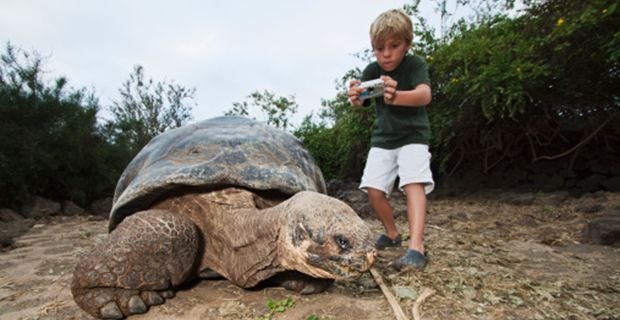
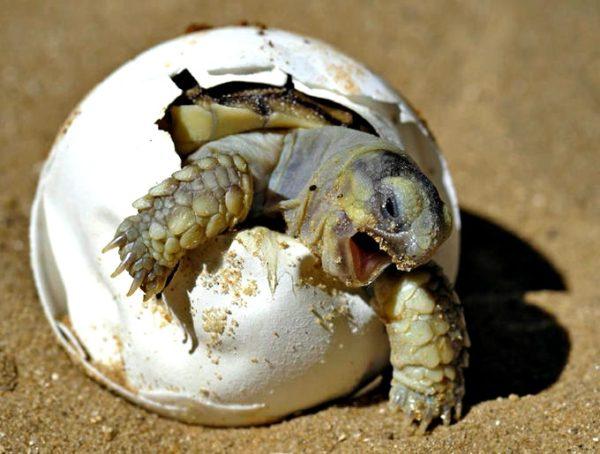

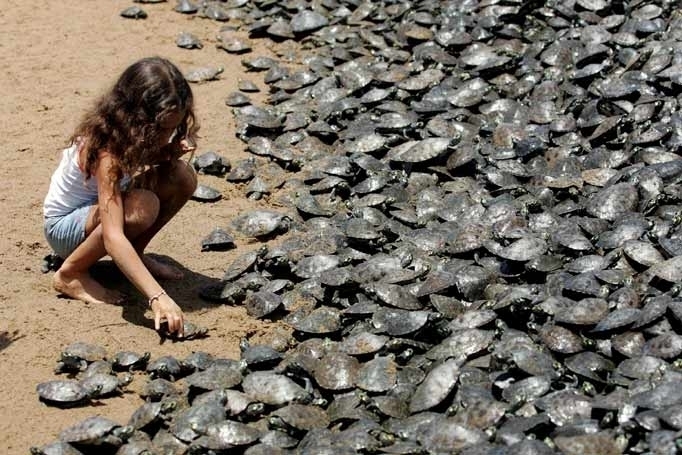
Let's take care of our species since without a good and varied biodiversity a drastic rupture would be made in our ecosystems.
Cuidemos nuestras especies ya que sin una buena y variada biodiversidad se haría una ruptura drástica en nuestros ecosistemas.
I just wanted to let the world know that these species need special care for that reason I did not want to give my opinion on it since that would endanger this beautiful animal.
solo quería darle al mundo a conocer que estas especies necesitan de un cuidado especial por esa razón no quise dar mi opinion en si ya que eso pondría en peligro a este hermoso animal.
Thank you for your support and your vote, thanks also for your good taste for the support of our animals in extinction.
gracias por tu apoyo y tu voto gracias también por tus buen gusto por el apoyo a nuestros animales en extinción.